News from Yr 4/5/6
Wellbeing, NAPLAN, Maths, Religion & Literacy

News from Yr 4/5/6
Wellbeing, NAPLAN, Maths, Religion & Literacy
The students in Year 4/5/6 have been busy learning about emotions and body language. We have been learning about this so that we are able to show more empathy towards others both on the playground and in class.
In class, we looked at a video about a girl called Riley. We analysed her body language and how she may have been feeling through the video. We then brainstormed the emotions she may have felt and made posters of these emotions with pictures describing them. During this activity, the students asked questions like “What does being anxious look like?” “How do we know when someone is sad rather than mad?” “How do we comfort people when they are feeling anxious, worried or sad?” From these questions, we had many classroom discussions on what emotions look like and how people may show it using their body language in different ways. Also, we discussed how we can approach our friends when they are feeling some of these emotions.
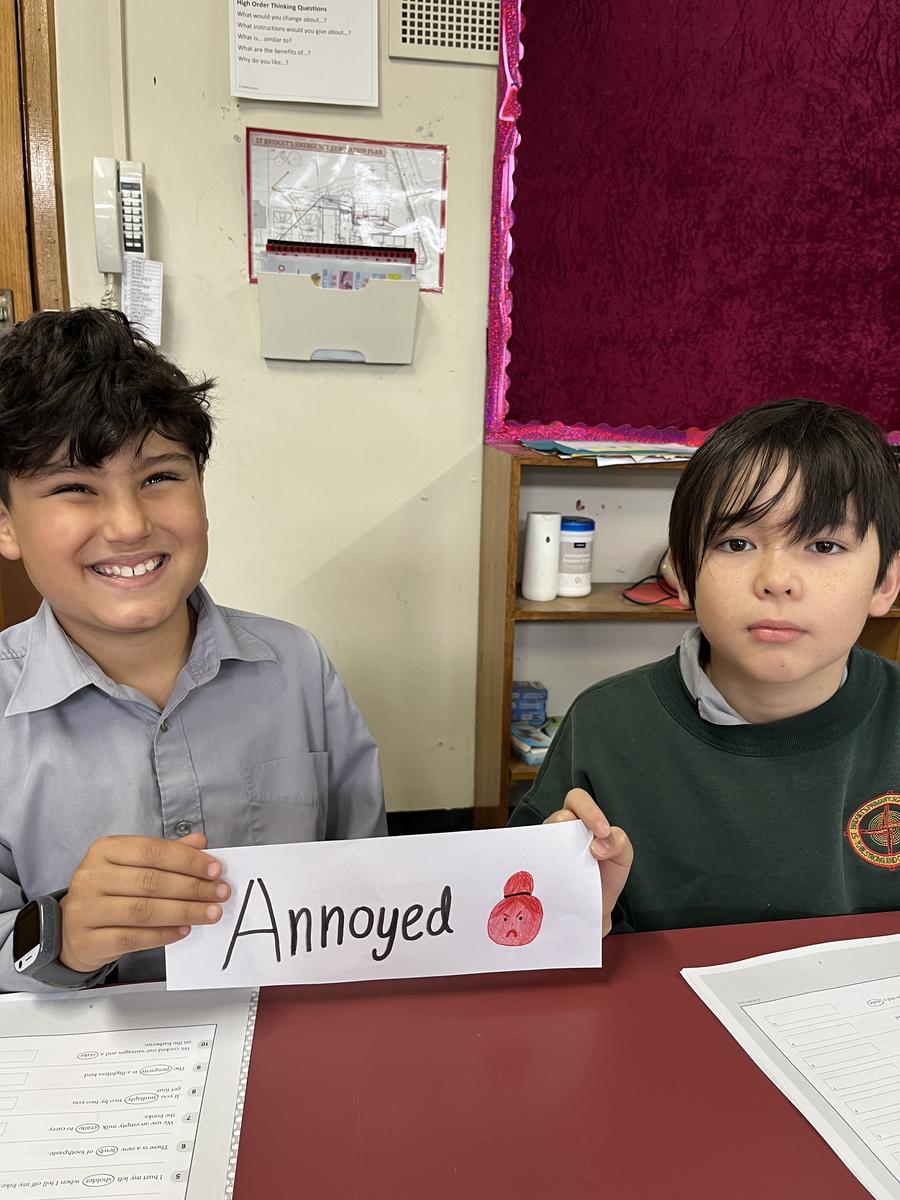


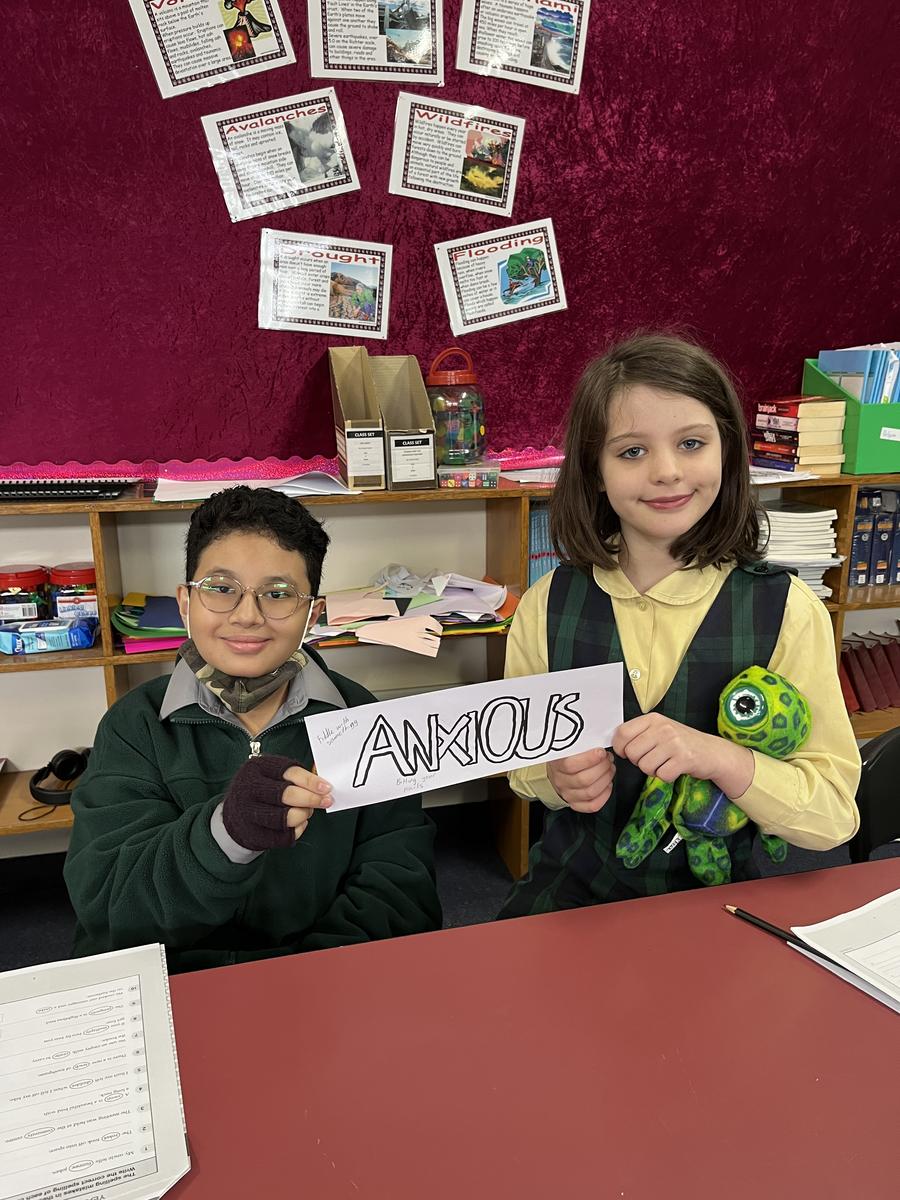




On May the 4th, the students celebrated Star Wars Day by participating in some fun classroom activities that activated their brains. We started off the day by playing Star Wars Wordle and the answer was Grogu.
The students then shifted to writing a story about crash landing on the planet Endor and being confronted by a group of Ewoks talking about how they will cook them for dinner. How did each student escape? The hilarious pieces of writing that came from this were so exciting to hear when some students shared.
We finished off the Star Wars Day by doing some maths activities that included all their favourite characters and some algebra which the students loved to figure out. The students were so engaged during the day through their love of Star Wars.

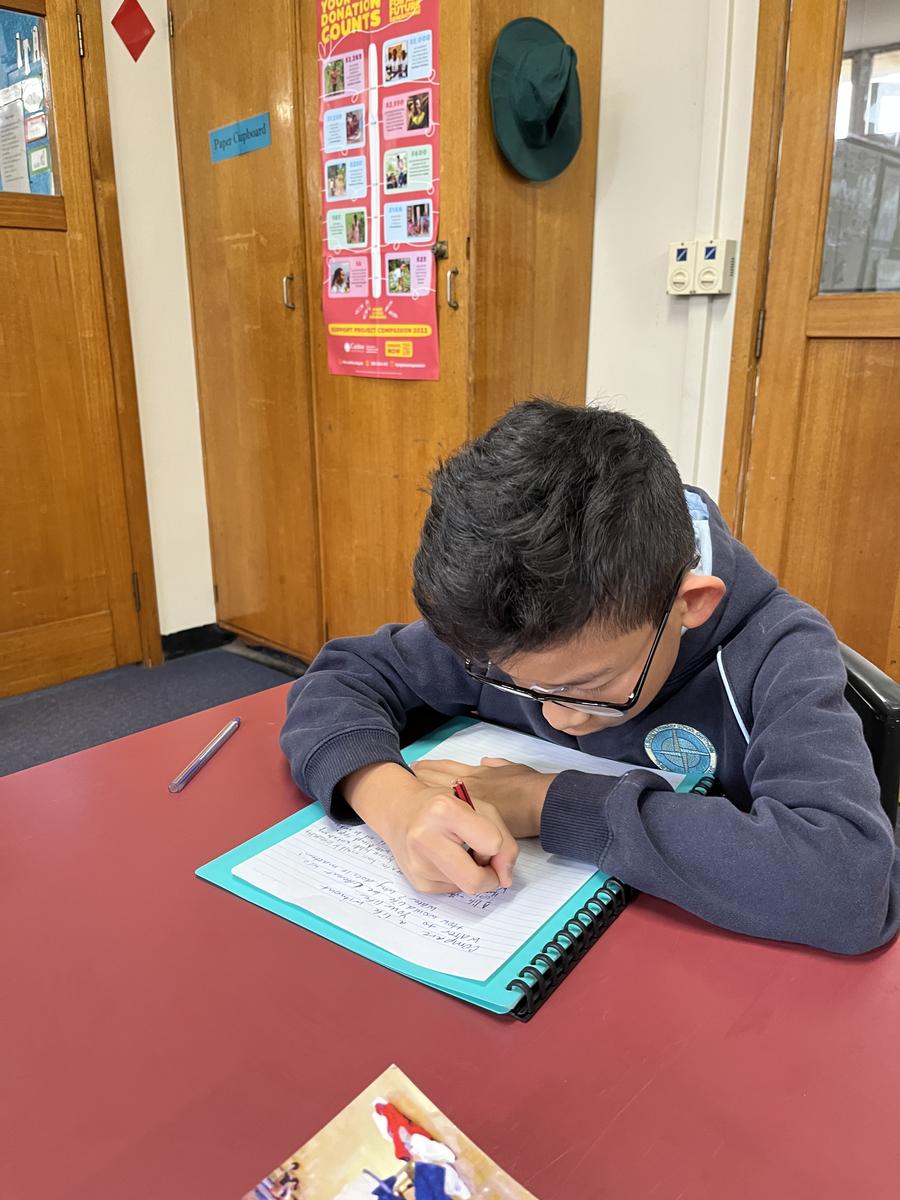


During the term students Year 5 sat the annual National Assessment Program - Literacy and Numeracy (NAPLAN). In preparation for the test, we firstly talked about NAPLAN and the worries or concerns we had about it. We talked about how it wasn’t the end of the world if you didn’t know an answer and we also talked about some strategies to keep ourselves calm during the test. We tried some breathing techniques and positive self-talk.
Positive self-talk is important because when we tell ourselves negative things we often believe it. So instead of saying negative things, we talked about thinking of and telling ourselves positive things.
We also did a range of practice NAPLAN tests from previous years to know what to expect. I know that our Year 5 students did their best during NAPLAN because of the positive attitude shown. Our school could not be more proud of them for trying their best.
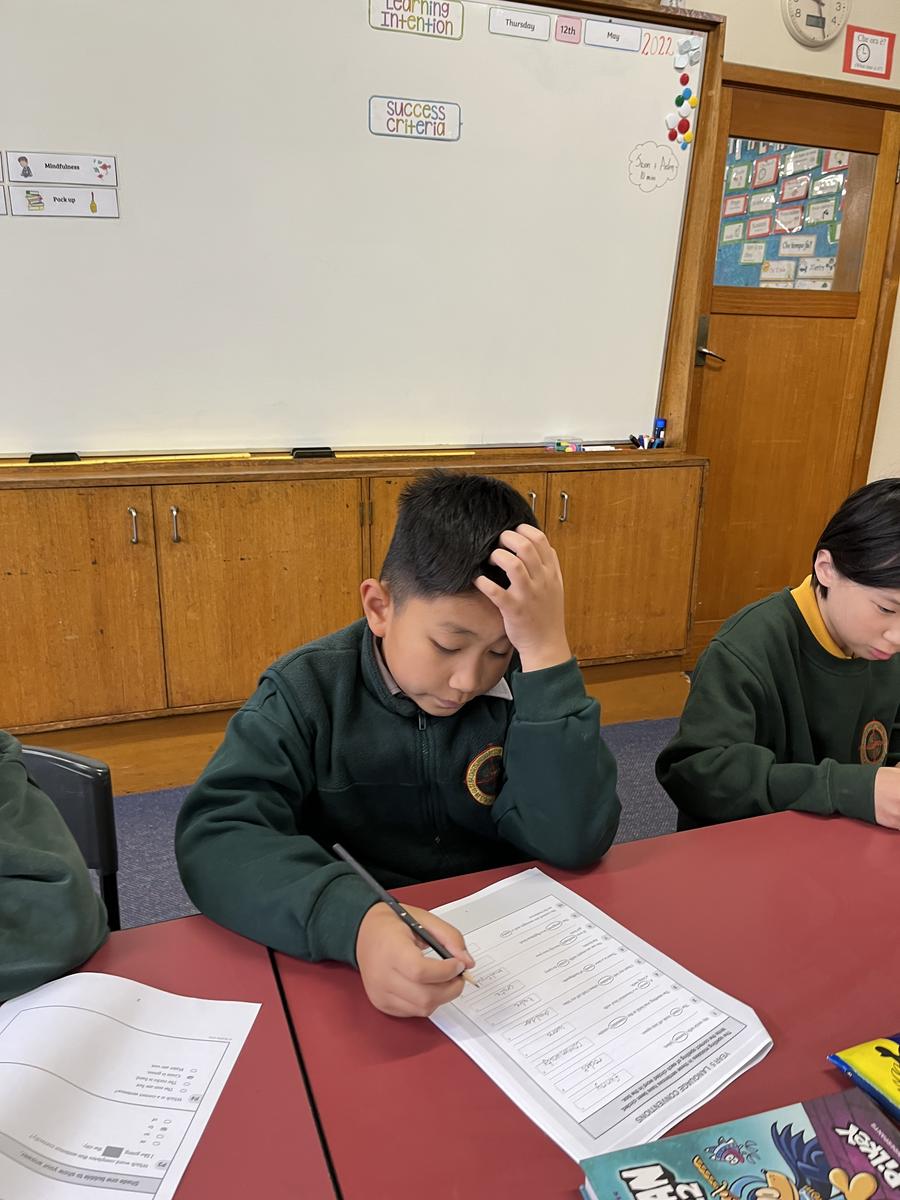
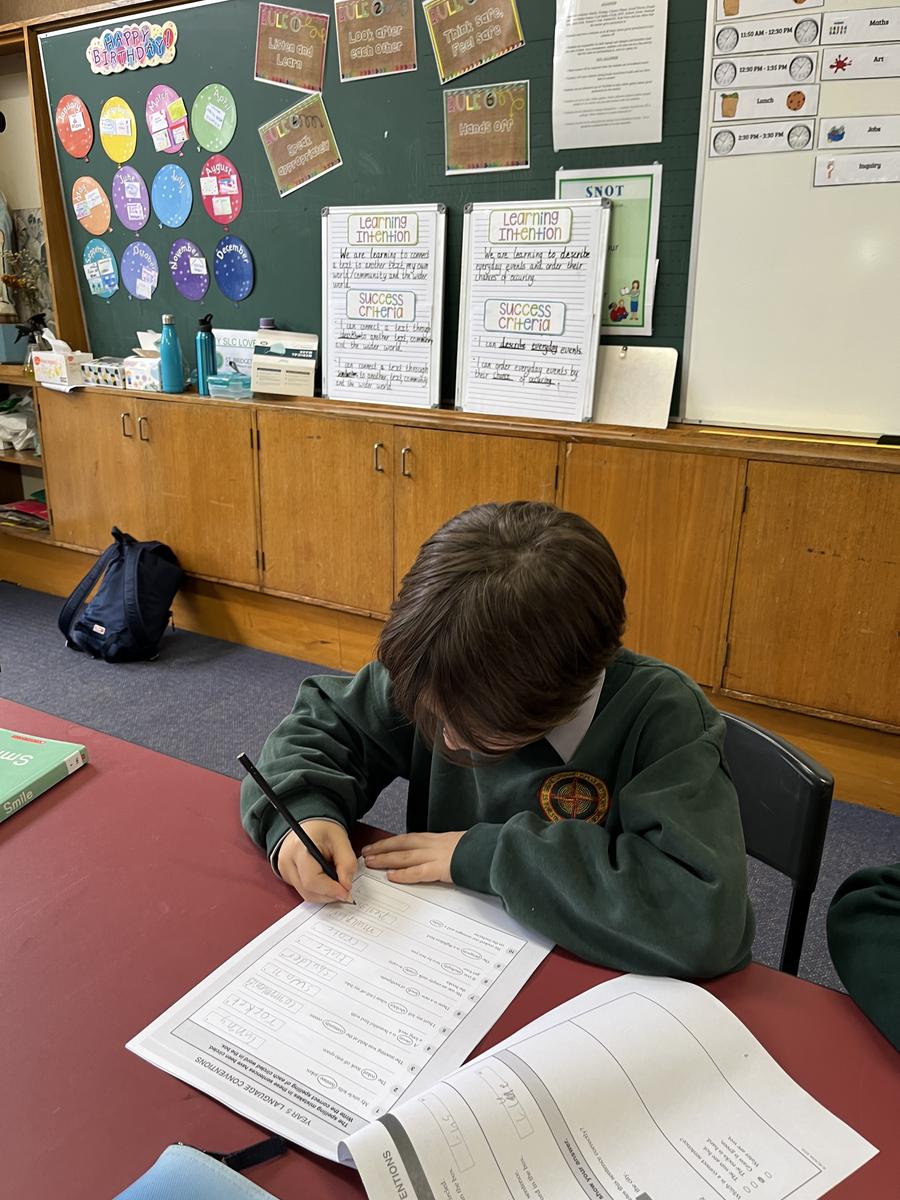
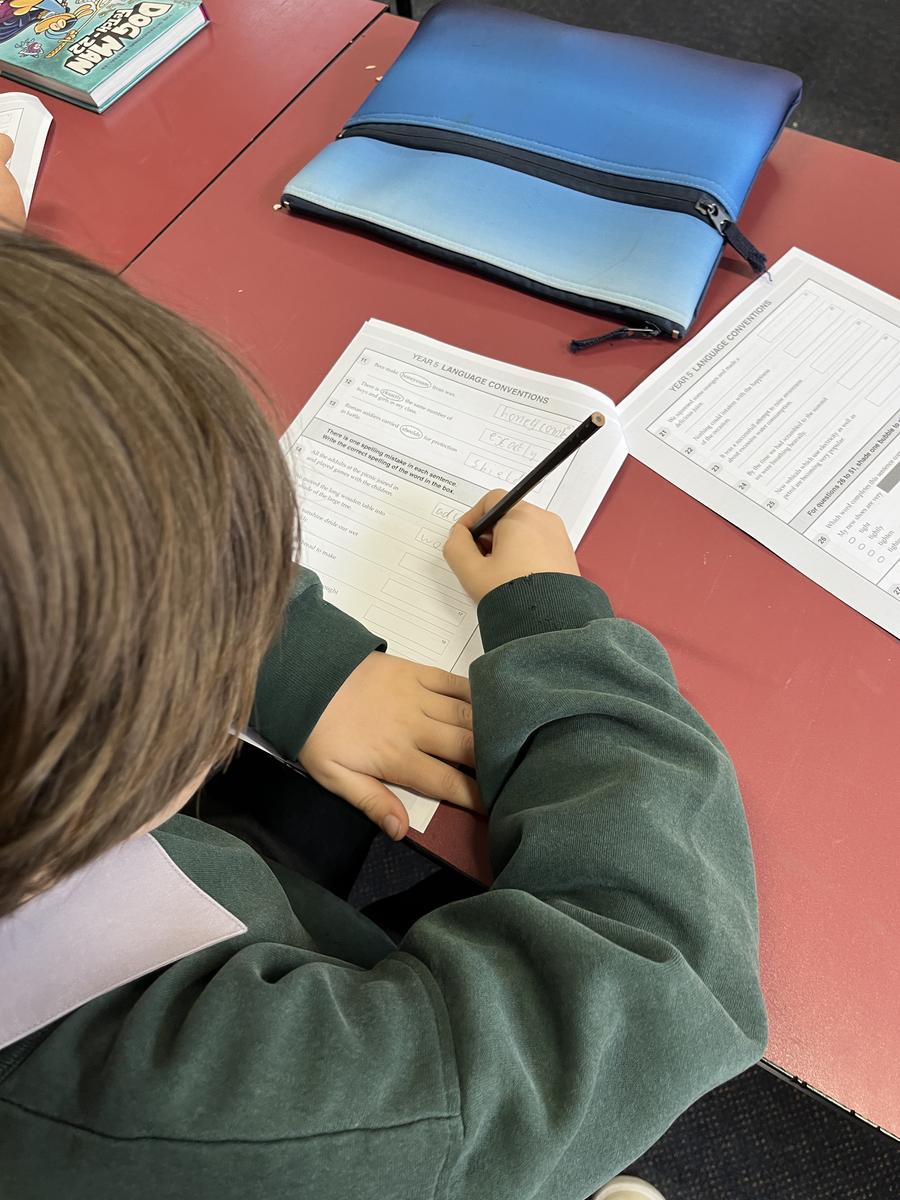



The Year 4/5/6 students learnt about
Pentecost and the Gifts of the Holy Spirit. Through this we focused on what gifts we see in ourselves and in others. To show this, the students made their own Holy Spirit tongues of fire and in those tongues they put one of the gifts they thought most represented them. Just as when the Holy Spirit came on Pentecost the disciples not only obtained the ability to speak different languages and spread the word of God but they showed the world the gifts of the Holy Spirit being; Knowledge, Wisdom, Understanding, Piety, Fear of the Lord, Fortitude and Counsel.

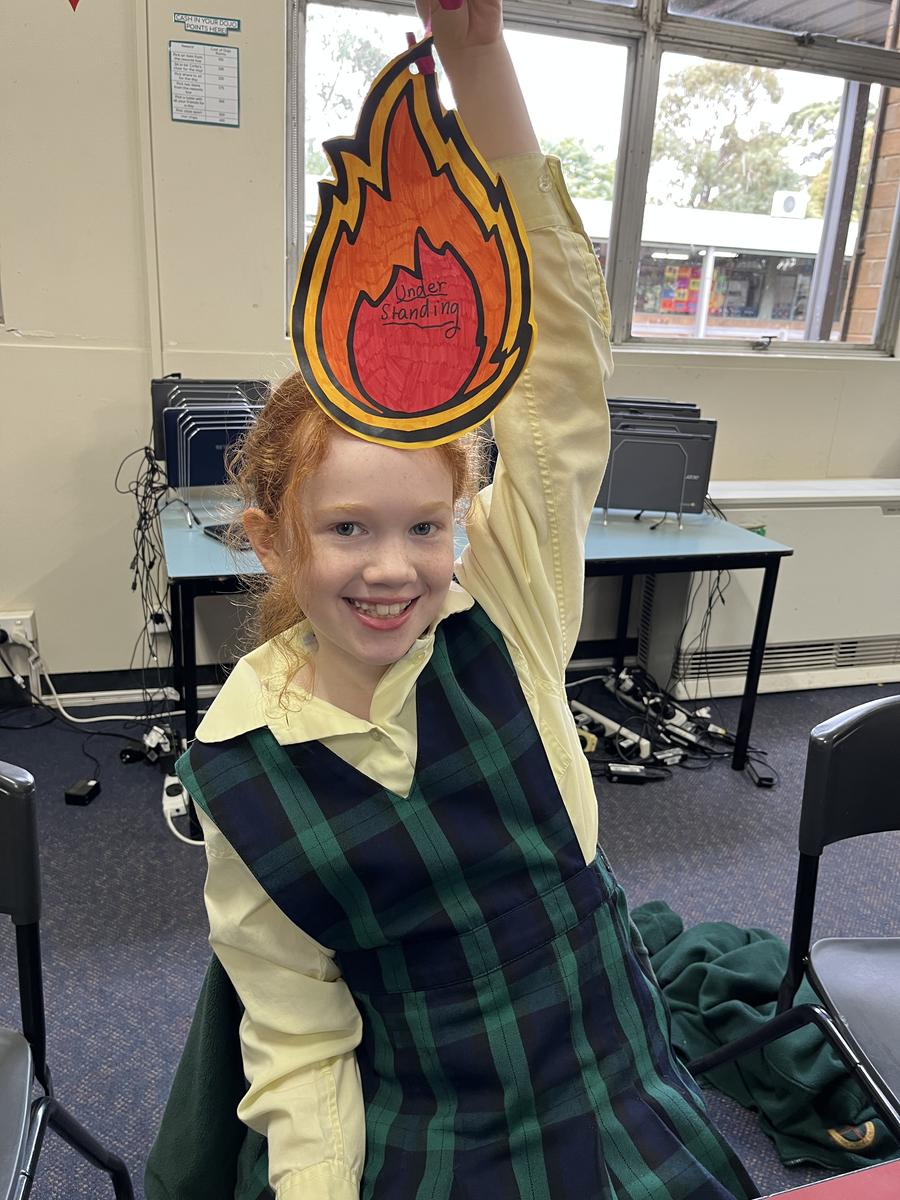

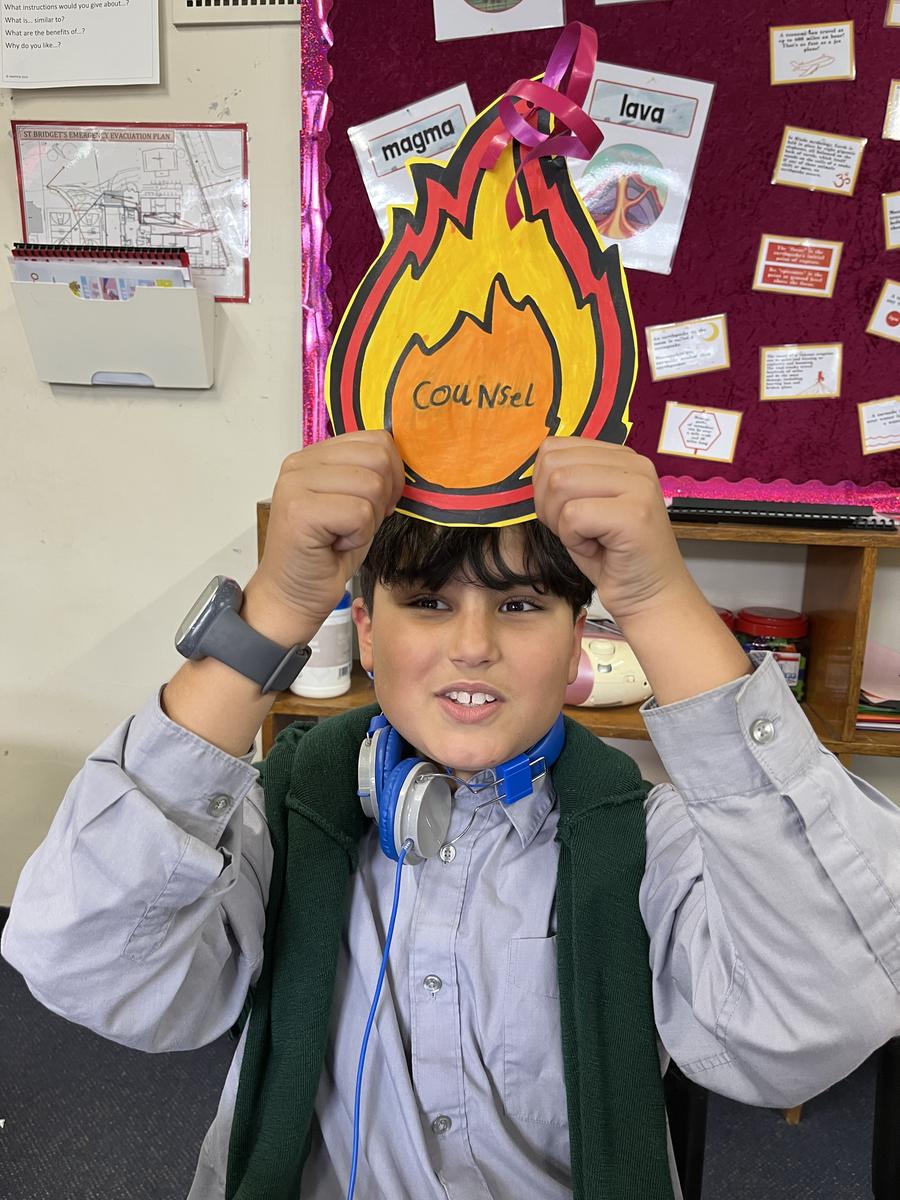




In Maths, the Year 4/5/6 students have been learning about fractions in particular ordering and comparing fractions but also what equivalent fractions are. A strategy to help understand equivalent fractions is a fraction wall. A fraction wall shows relationships between fractions with different denominators. The students created their own equivalent fraction walls to display in the classroom which will help them understand not only equivalent fractions but help them with ordering and comparing fractions as well.
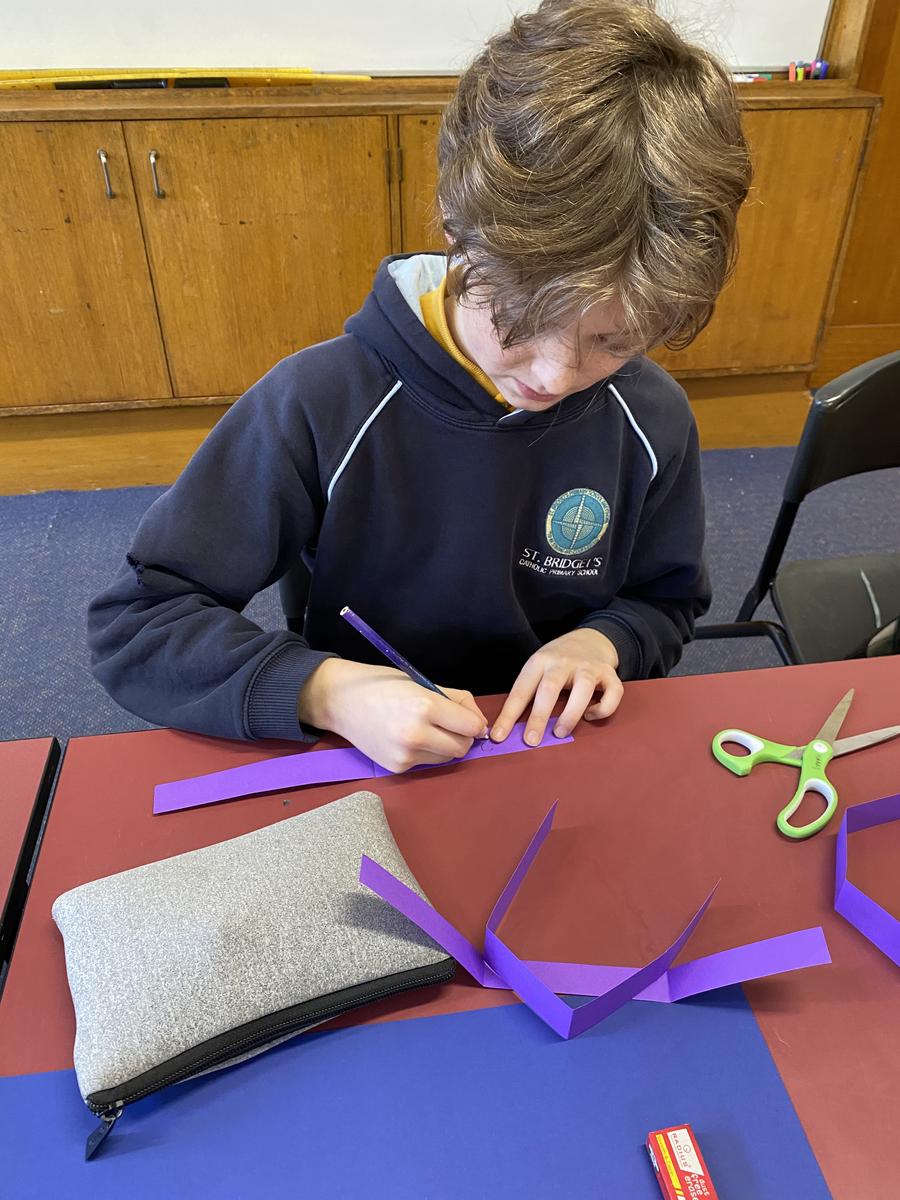
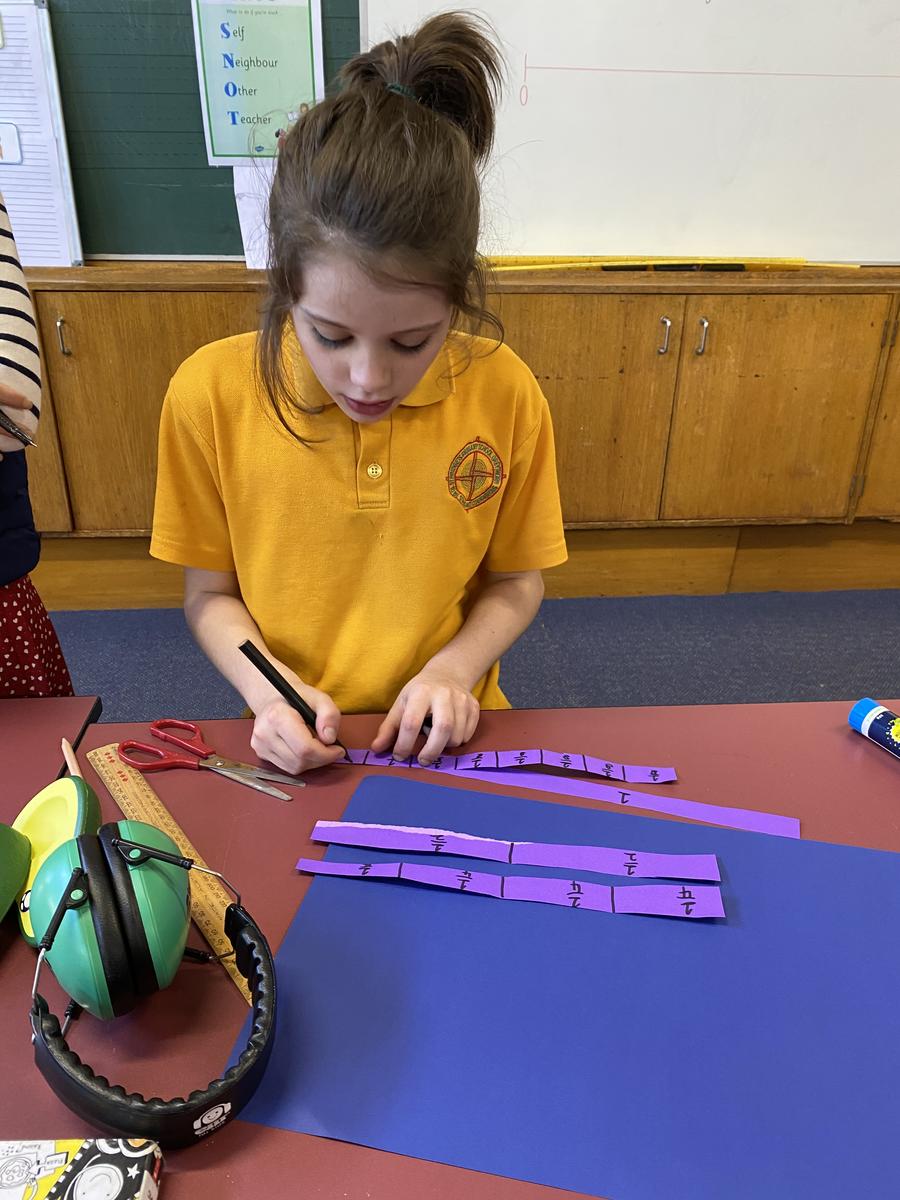
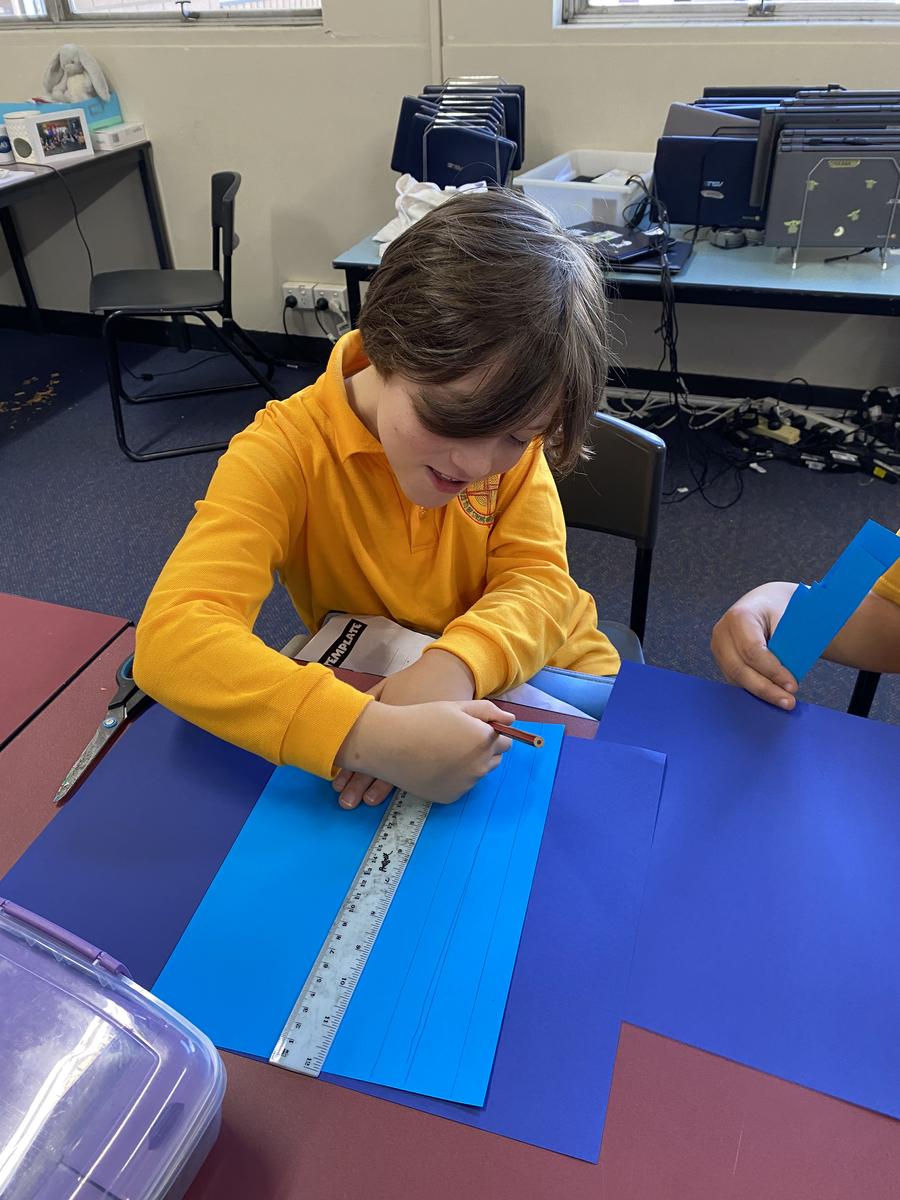
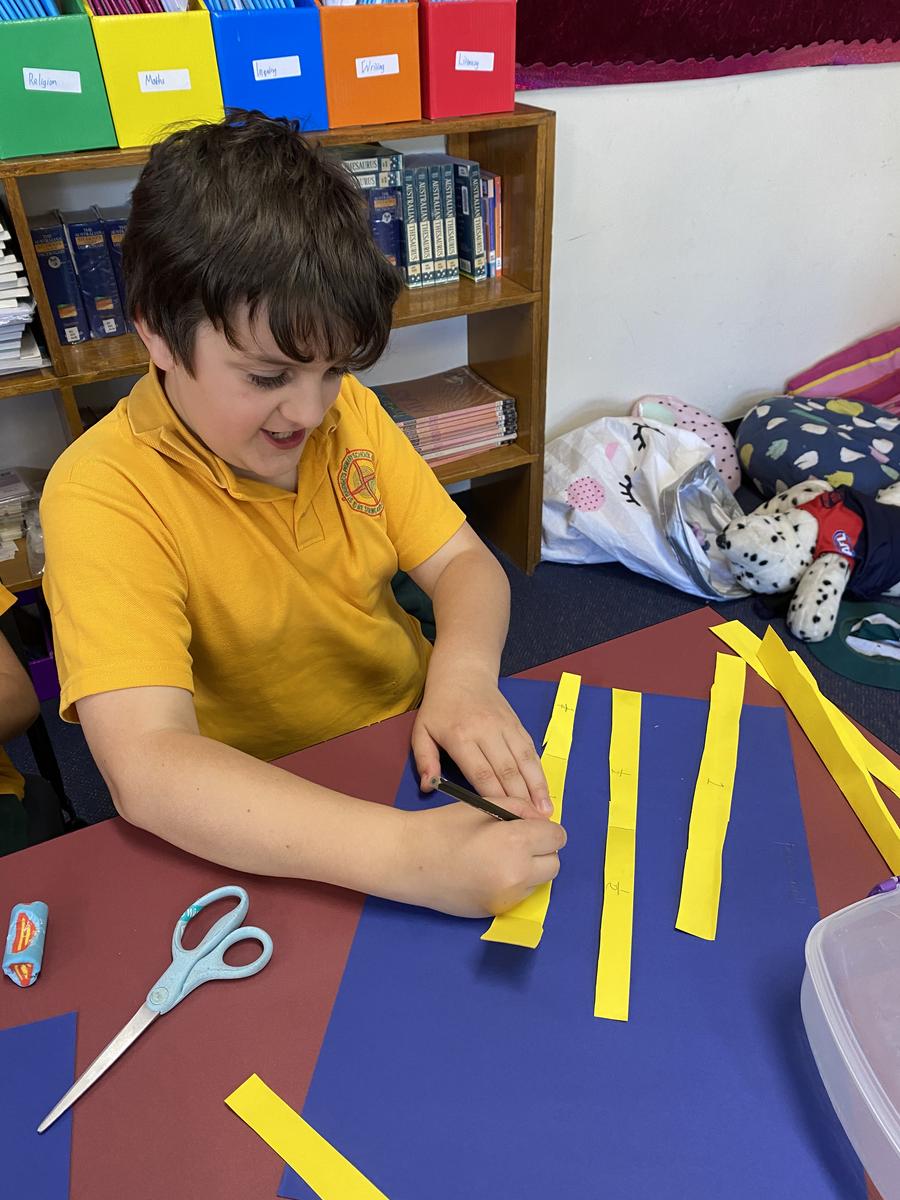




The tricky part was folding the paper evenly otherwise it would not indicate whether a fraction was equivalent or not.
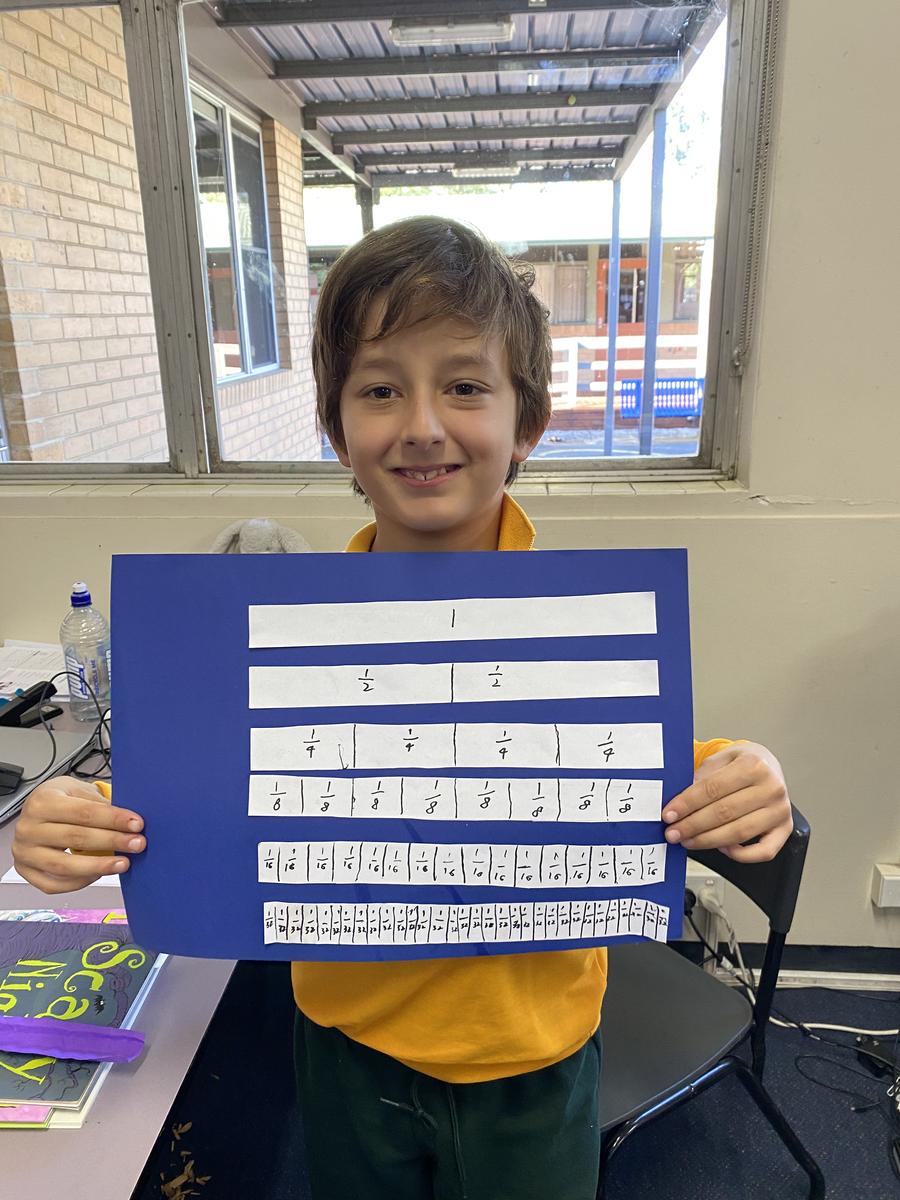


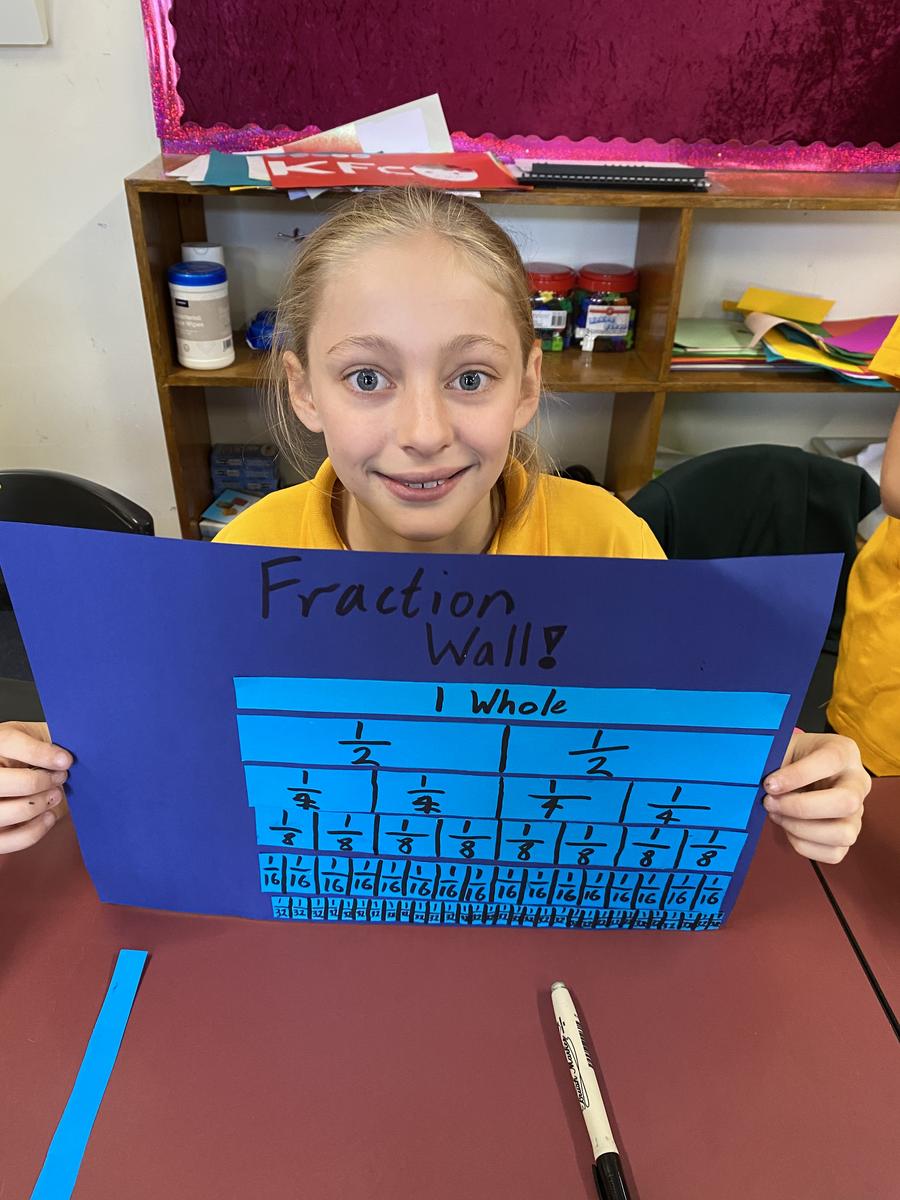
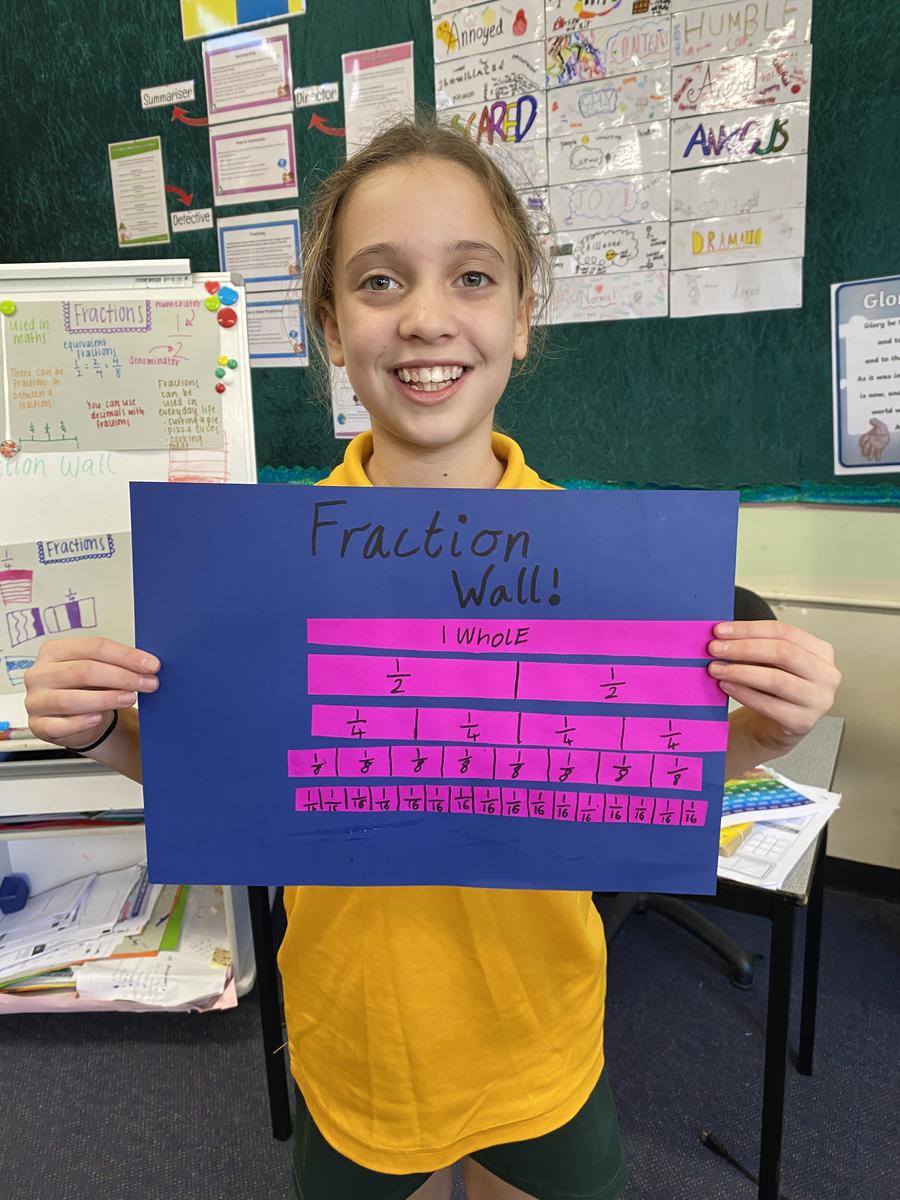
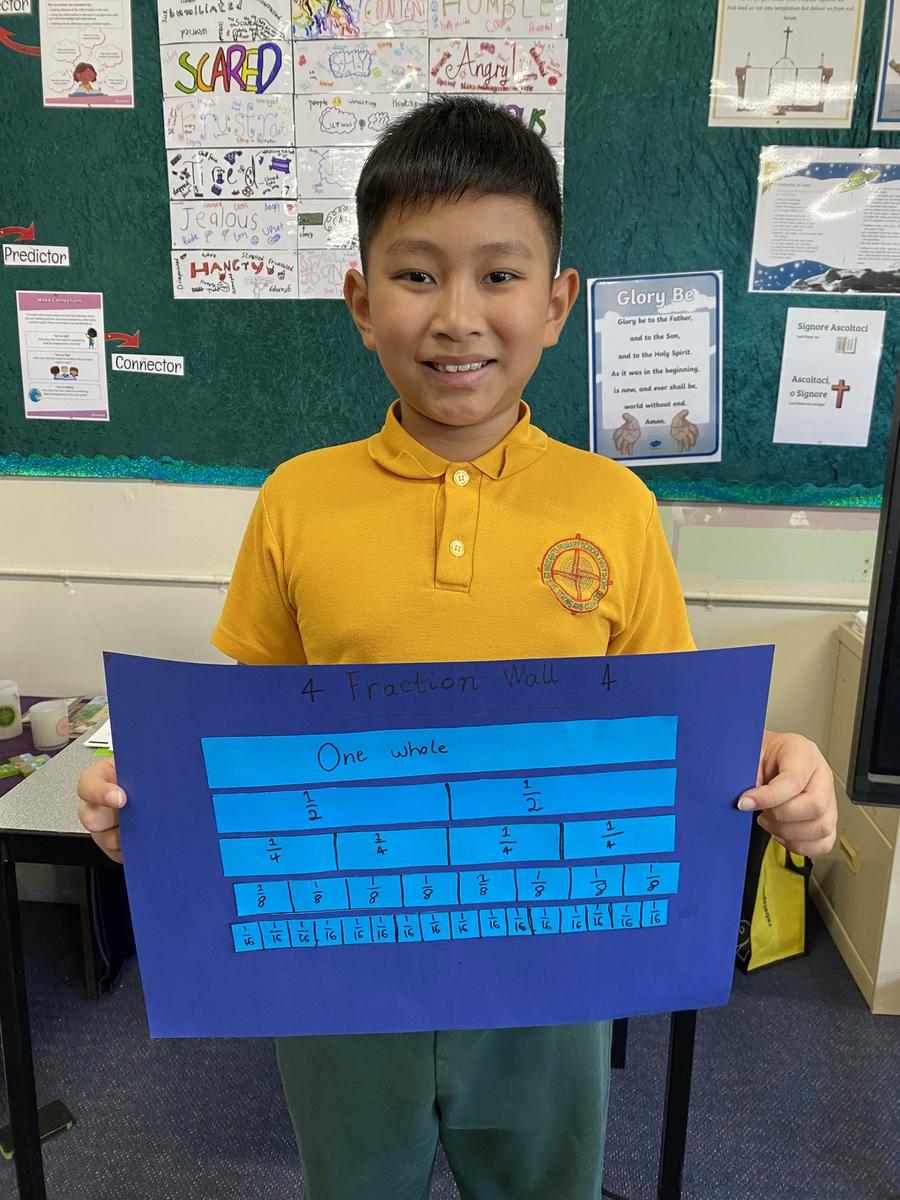






As a class, we have been reading The BFG (Big Friendly Giant) by Roald Dahl. In the book there is a special drink from the land of the giants called Frobscottle. This drink was delightful and tasted of oranges and vanilla but it had one strange trait, the bubbles in this soft drink went downwards instead of upwards. So instead of letting out a burp when the bubbles built up too much it came out the other end! The students were asked to create their own Frobscottle or drink of choice and they could choose which way the bubbles went or if there were any bubbles at all. The students also had to list the ingredients used to create drink.
The students read the following poem together as a class. The students were asked to identify and justify the text type using the knowledge they had learnt during their poetry unit. We then discussed and highlighted the words that helped to create a image in their mind. Students were then asked to create an artwork of what they visualised as they read the poem.
Green Giant by Jack Prelutsky
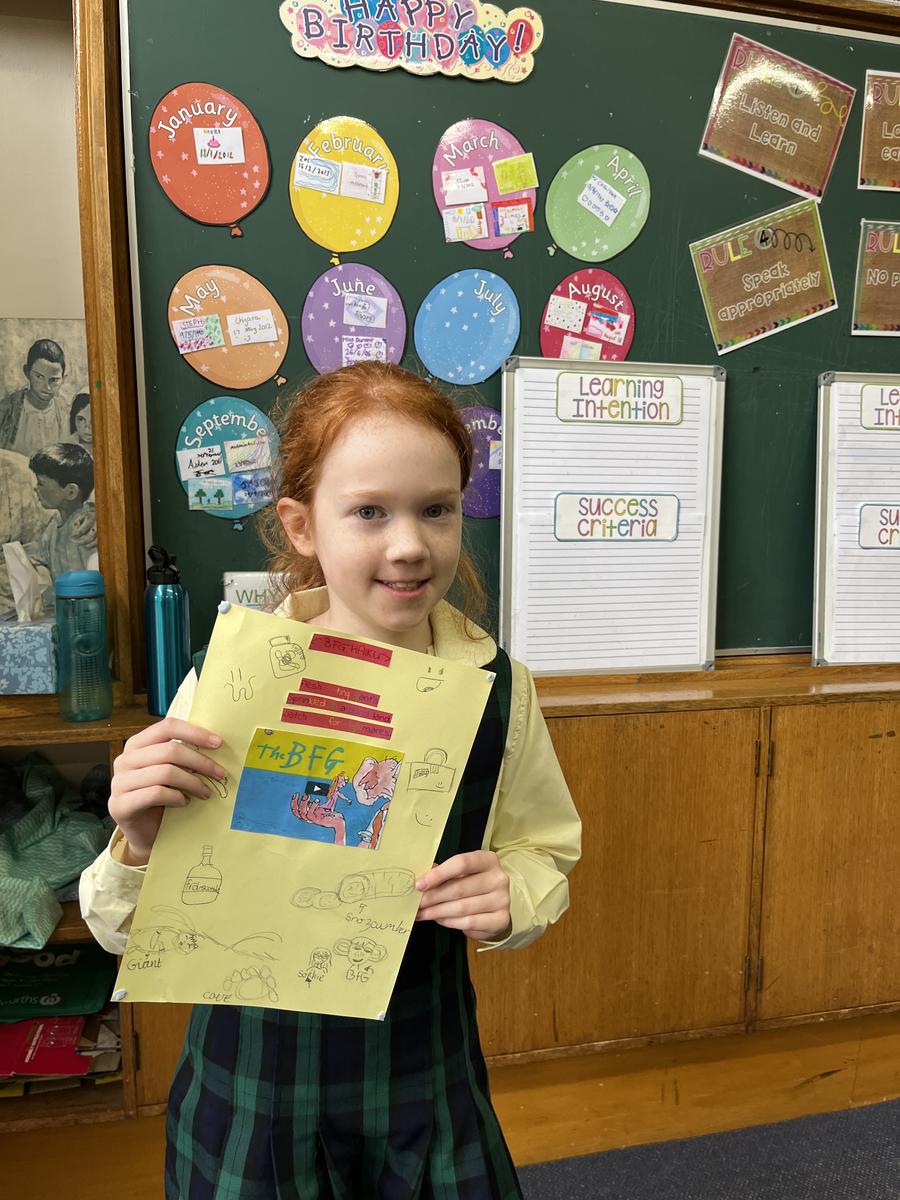
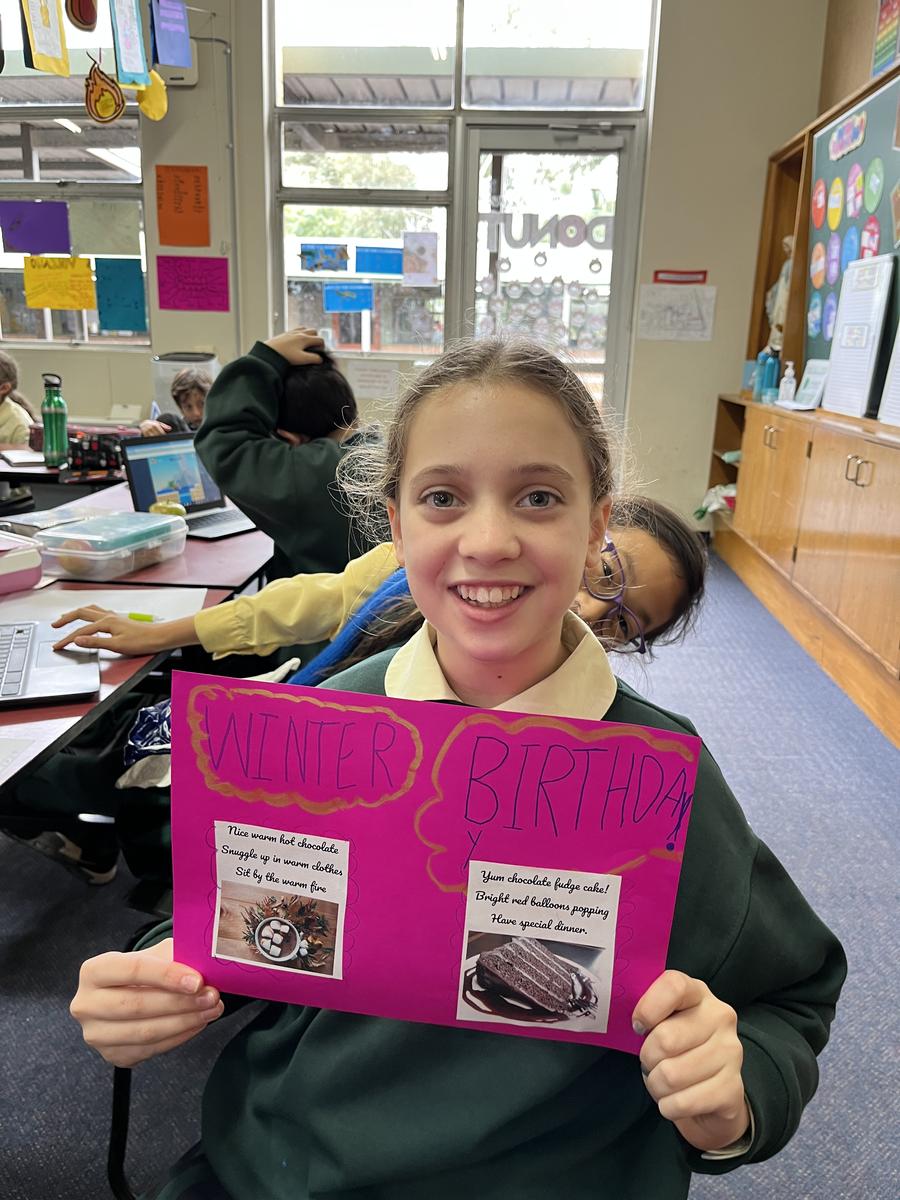
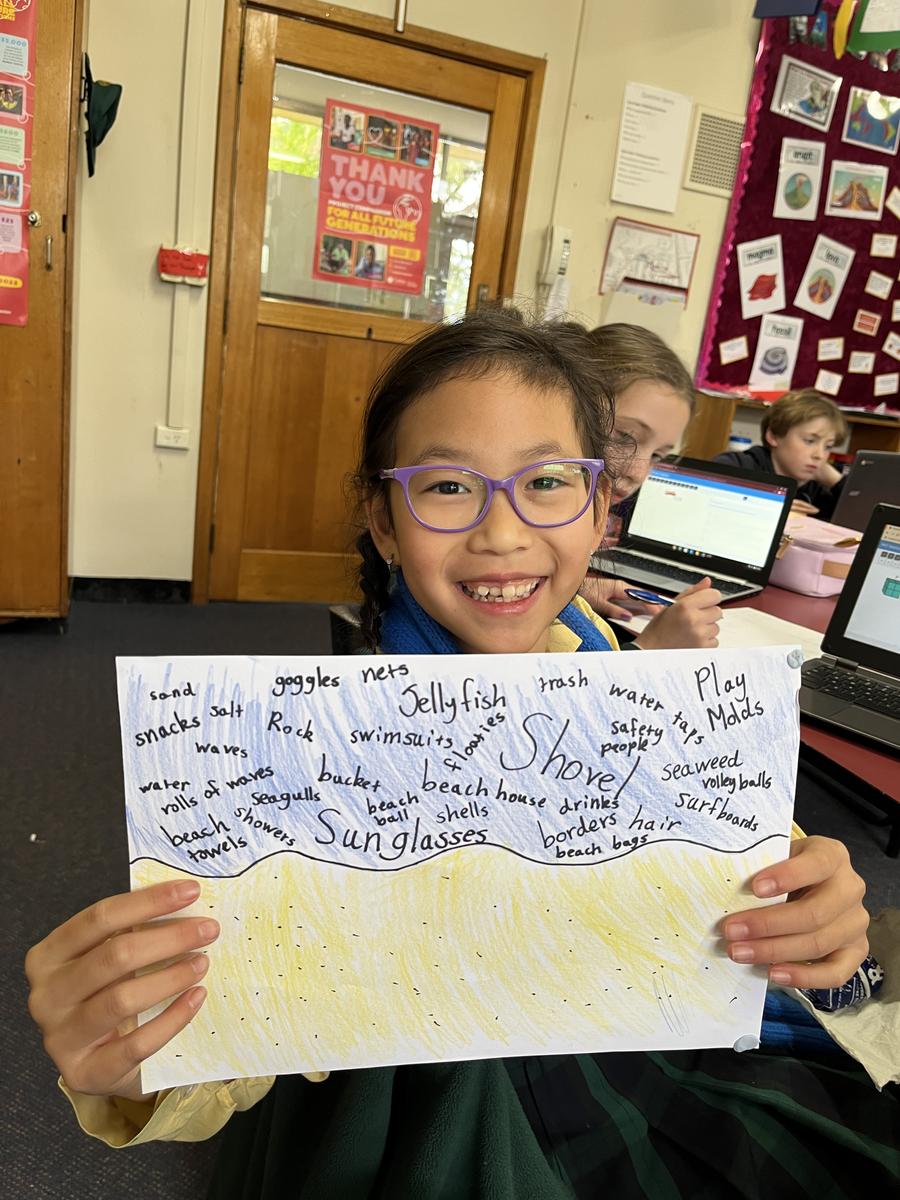
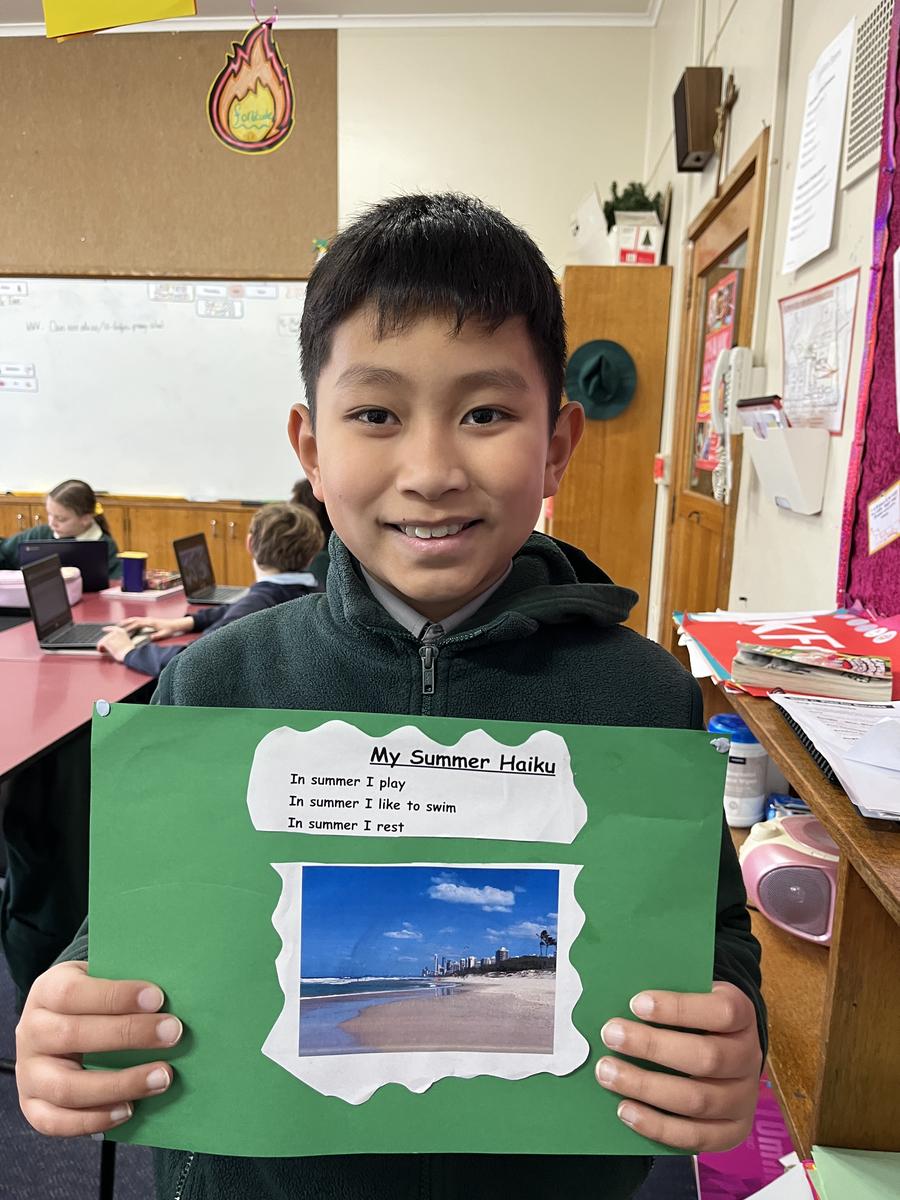




The students have been working on writing all kinds of different poems like shape poems, limericks, haiku’s and general rhyming poems. The students found haiku very fun and enjoyable to learn about and write. We started by exploring what a syllable is and then we started to count the syllables in sentences. We also investigated how haiku’s are made. A haiku has three lines and the first and last line has a total of 5 syllables and the second line has 7 syllables. Haiku’s are also traditional Japanese poems mainly about nature which most of the students chose to write about.
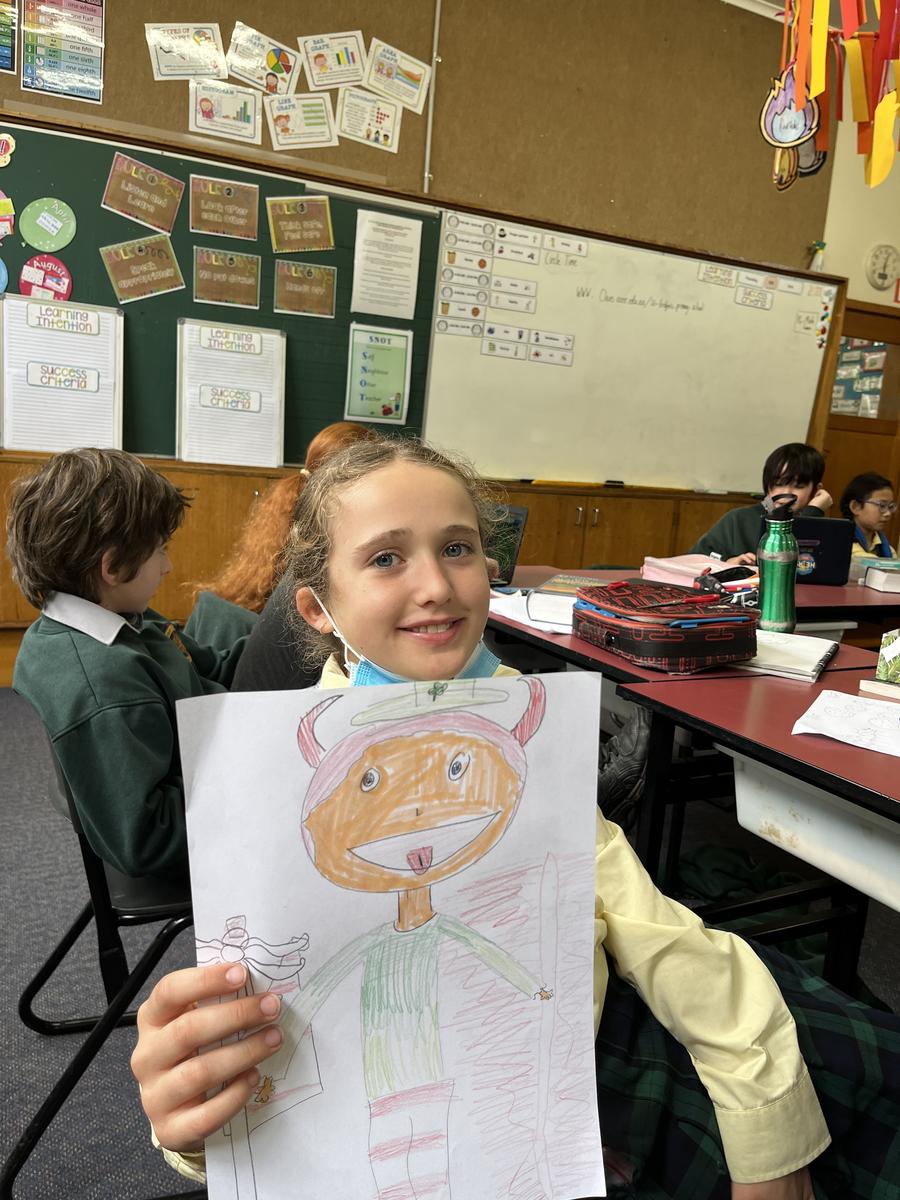



As part of our Inquiry unit, the students learnt about natural disasters. As we have been focusing on different natural disasters each lesson, we have learnt how these natural disasters have affected people and how people have prepared for them.
Our Inquiry project was to individually create a house that could withstand a particular natural disaster. Obviously, these are scale models but for some students we tested these houses out in safe conditions. The students learnt how to prepare and protect their houses in case a natural disaster occurs.
In Maths, we have been learning about how to calculate the area and perimeter of squares and rectangles. The area of a rectangle or square can be calculated by multiplying the length and the width together. The perimeter can be calculated by adding all the outside dimensions of a shape together. After learning this, the students created their own rectangular or square robots. The students created their robot on grid paper using squares and rectangles. The students had to find the dimensions of each side of each shape they included. They then calculated the area and perimeters of each robot by breaking the robot up into smaller shapes.
On the 17th July, some students in Years 4 and 5 are undertaking the Sacrament of Communion. In preparation for this sacrament, the students learnt about the origins of communion or eucharist and what it means as a Catholic to participate in this tradition. Whilst learning about communion, the students also prepared their minds and spirits to receive this sacrament for the first time. The students also created a piece of art of the host and chalice to represent the body and blood of Christ.
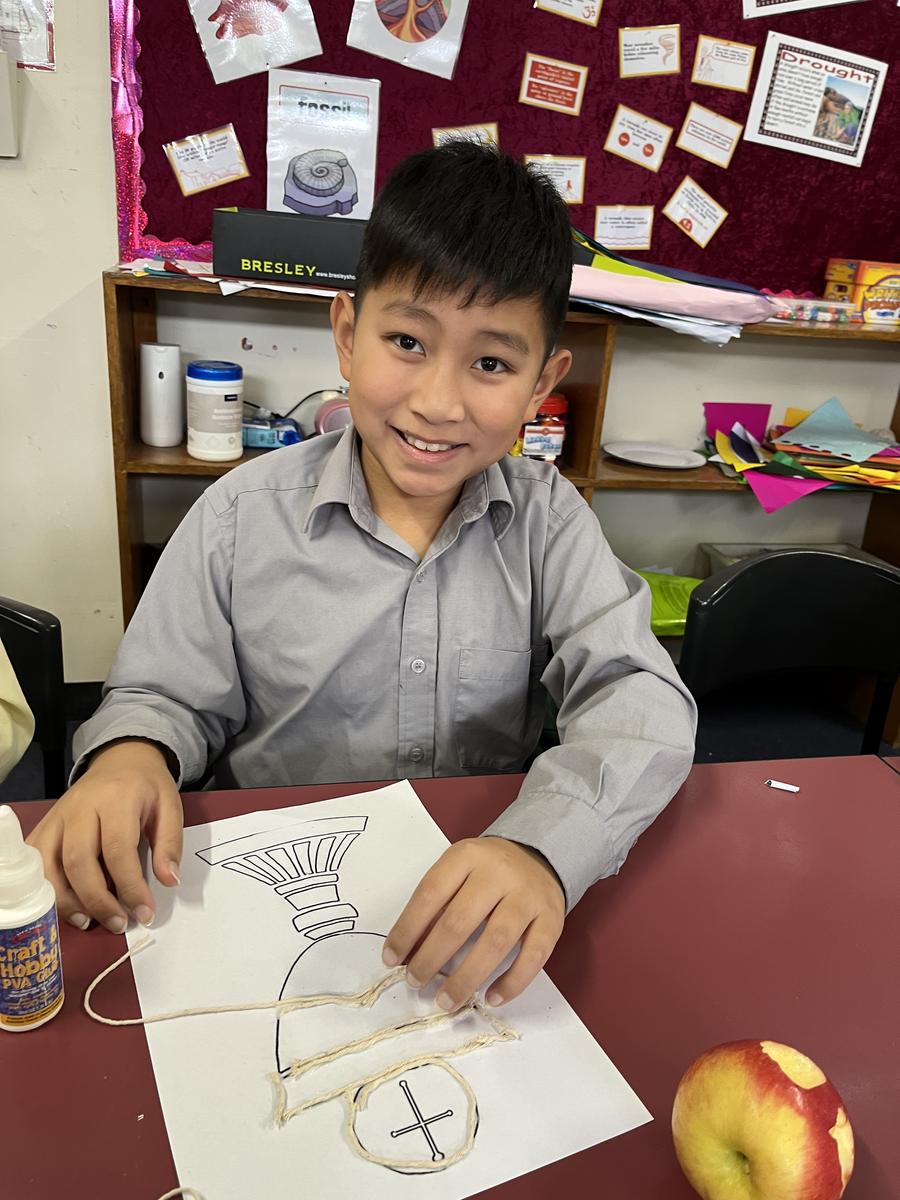
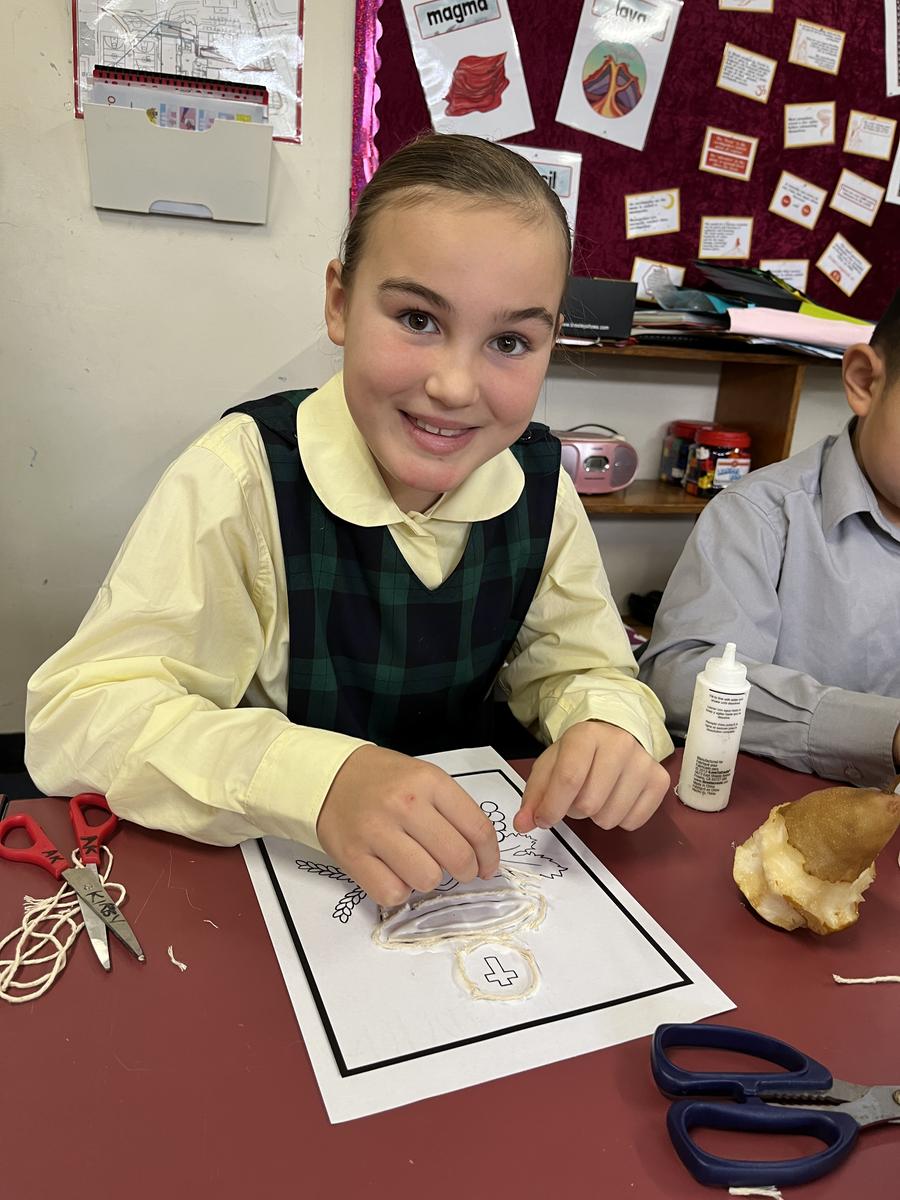
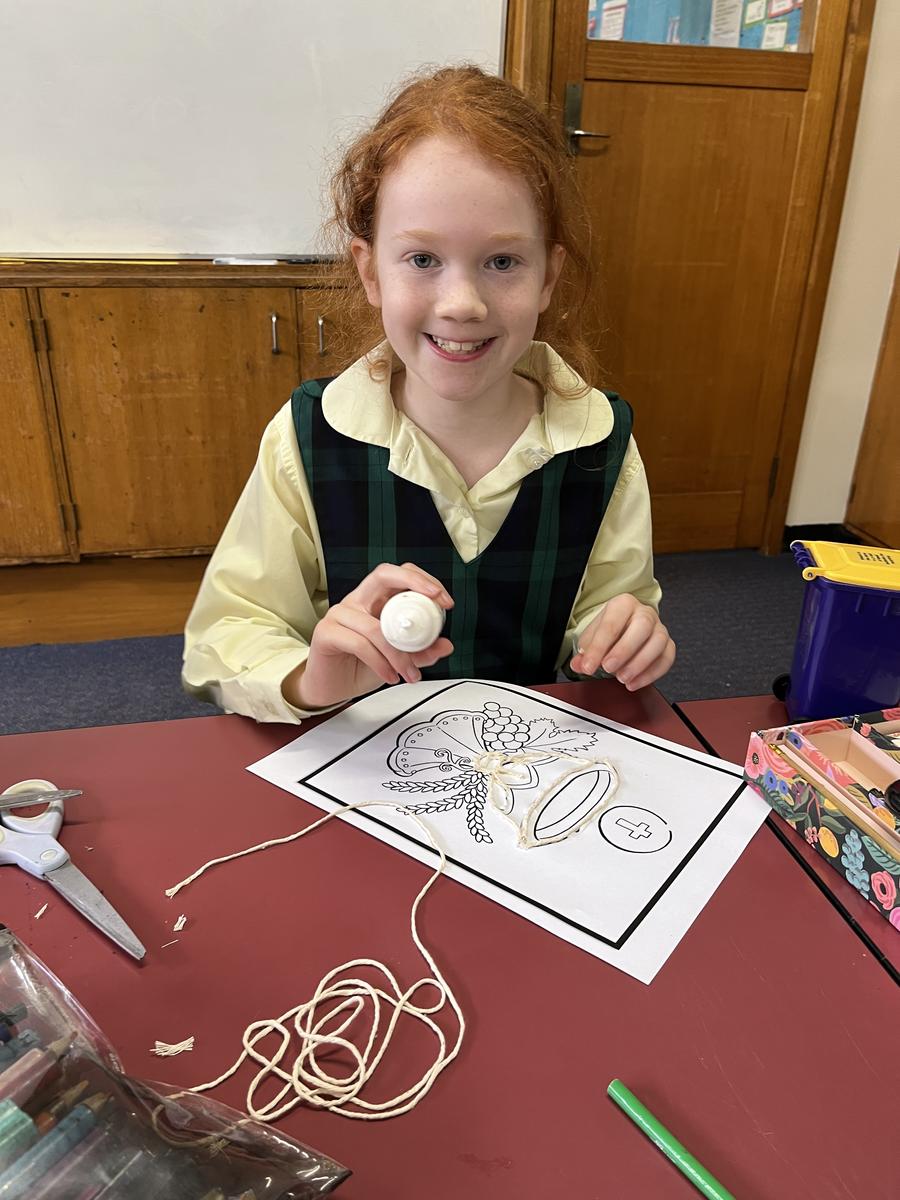


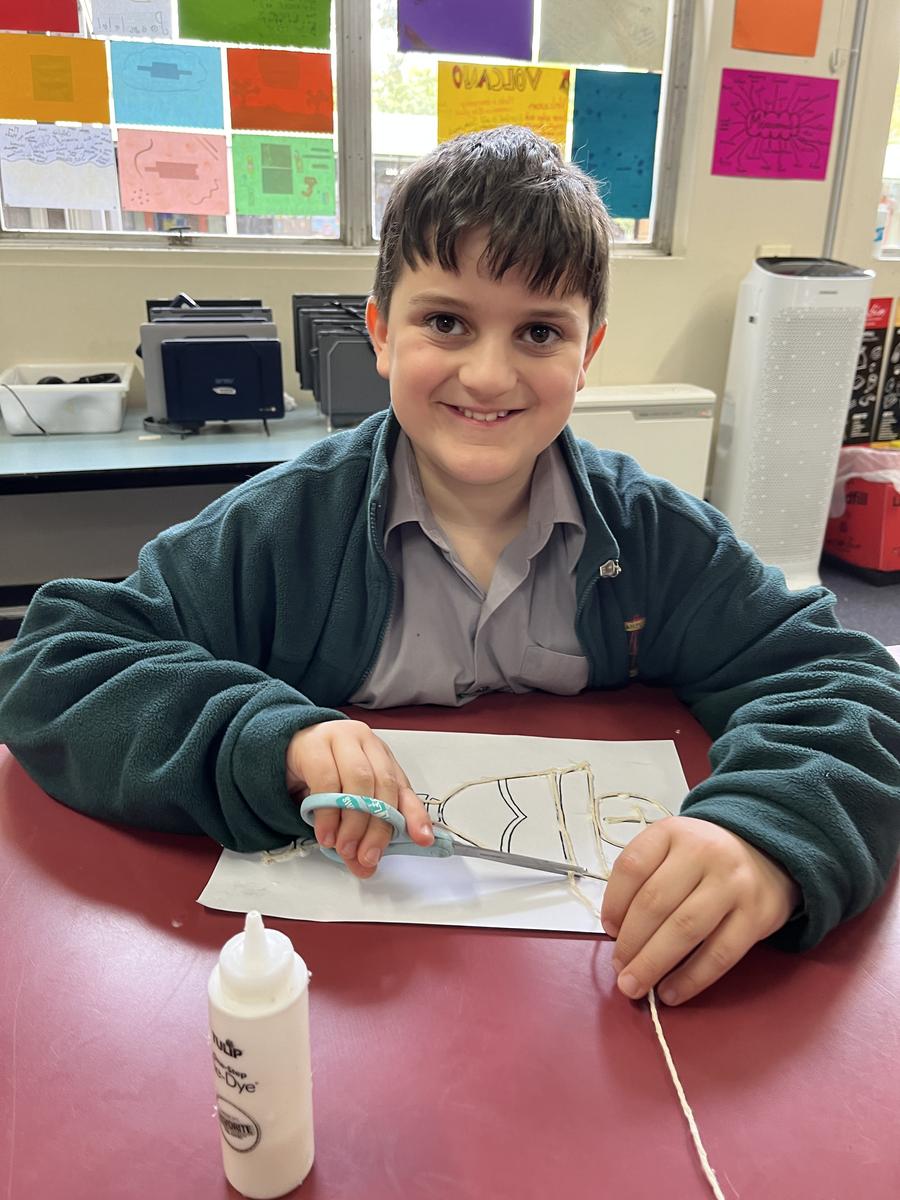






Kind regards
Mr Jack Cirillo and Miss Maddi Durrant
Year 4/5/6 Classroom Teachers